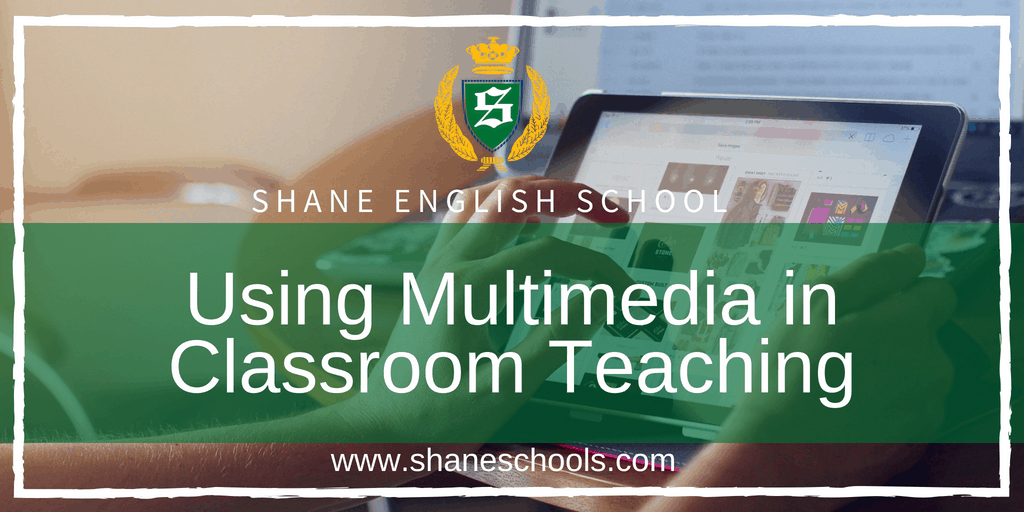Today, it is normal that students in elementary school, high school, and university learn English. However, standard methods of teaching are often not enough. Can teachers successfully incorporate multimedia into their classes and if yes – how should they do that?
Improved and modernized teaching using multimedia in classes and extracurricular activities, especially in elementary school, is becoming increasingly popular with teachers all over the world.
Besides creating a fun learning environment for the students, this type of teaching using multimedia can immensely help teachers prepare materials and conduct classes that are of higher quality, more interesting, and more creative.
Online Tools for Teachers
The Internet is not simply an immense storage of information that its users can passively consume. It provides plenty of resources for both teachers and students that can be used to improve the overall quality of teaching and learning.
Many of the tools that can be found online are free and accessible to everyone and can be used very successfully in classroom teaching and all forms of extracurricular activities.
In this way, learning stops being merely consuming content; it is through collaboration and creation of your own knowledge with the help of a variety of resources and users.
If you are interested in trying out some of these tools, take a look at the ones listed below:
TeacherTube
TeacherTube enables all participants in the teaching process, especially teachers, to exchange different types of educational content such as video and audio, documents, photos, groups, and blogs. They help to enrich the teaching process and make it more interesting.
Prezi
Prezi is a program used for creating dynamic multimedia presentations. Although similar to Microsoft PowerPoint, Prezi offers its users more creativity when creating their presentations which, ultimately, leads to creating a more interesting lecture for the students who will certainly be engaged in each slide.
Edmodo
A social network where you can set tasks, make questionnaires, assess students’ work, schedule quizzes and much more. Certainly a very good tool for a teacher that be used completely free of charge.
These are just some of many websites and tools available to teachers but with a few searches on the Internet, you will be able to find lots of useful and free tools.
Interactive Whiteboards
Thanks to interactive whiteboards, classes are not based solely on lectures by teachers but encourage students’ activity and their inclusion in the teaching process. These whiteboards adapt the classrooms to the needs and interests of contemporary students and make them really want to spend time at school.
On interactive whiteboards, you can circle things, write or draw with the help of special pen or with a finger in some cases. By using simple movements, teachers are able to rearrange elements on its surface.
When creating teaching materials, the use of an interactive whiteboard allows the teacher to use documents from different programs on the board’s surface, mark, magnify and emphasize the text.
When presenting on an interactive whiteboard, it is also possible to connect to other pages, other computer programs, and various online websites. Additionally, it is possible to record everything shown on the screen during a lecture, which the students can access whenever they want.
In addition to increasing the activity, motivation and focus of students, the benefits of using such interactive technologies are both contributing to the enrichment of teaching content through different sources, the dynamics of teaching, the greater creativity of teachers and the development of functional abilities of students.
Playing Music in Classrooms
There have been numerous studies that have proven and highlighted the benefits of music to children’s brains.
One of several teaching approaches many lectures use, to some known as Desuggestopedia, proposes quiet music be played in the background while the students are engaged in work, more preferably if the work is being done in groups.
This quiet background music is said to improve the students’ cognitive abilities and positively influence memory and data retention, while at the same time creating a safe and positive learning environment.
Creating and Improving Computer-Literacy
It is certain that both changes in science and technology have led to the need for constant acquisition of new skills so, regardless of age, it is necessary to be computer-literate.
Also, new forms of education require self-improvement and search for information and facts that are not in the textbooks.
However, this almost certainly means the students will need to have access to a computer at their homes too.
There are computers and laptops on the market that are specially designed for students of elementary and secondary schools. They are characterized by fast integrated graphics, wireless connectivity and multimedia tools for current digital education.
Personalized education is the key to future education. By using technology, it becomes more interesting and attractive because an individual can learn anywhere, anytime, as well as harmonize their educational path with interests and responsibilities.
Incorporating multimedia in classroom teaching will help students get familiarized with technology at a young age which will certainly benefit the transition that is inevitable and that is moving from their school desks to their work desks and finding jobs in the modern world.
Want more teaching tips? Visit our Teaching Tips blog. Are you a teacher looking for new teaching opportunities? Visit our recruitment division at www.saxoncourt.com.
About the Author
Milica Madić, freelance blog/article writer from Serbia, with experience in teaching and working with young learners.

We're hiring!
With schools around the world, Shane English School always has exciting new opportunities to offer.


